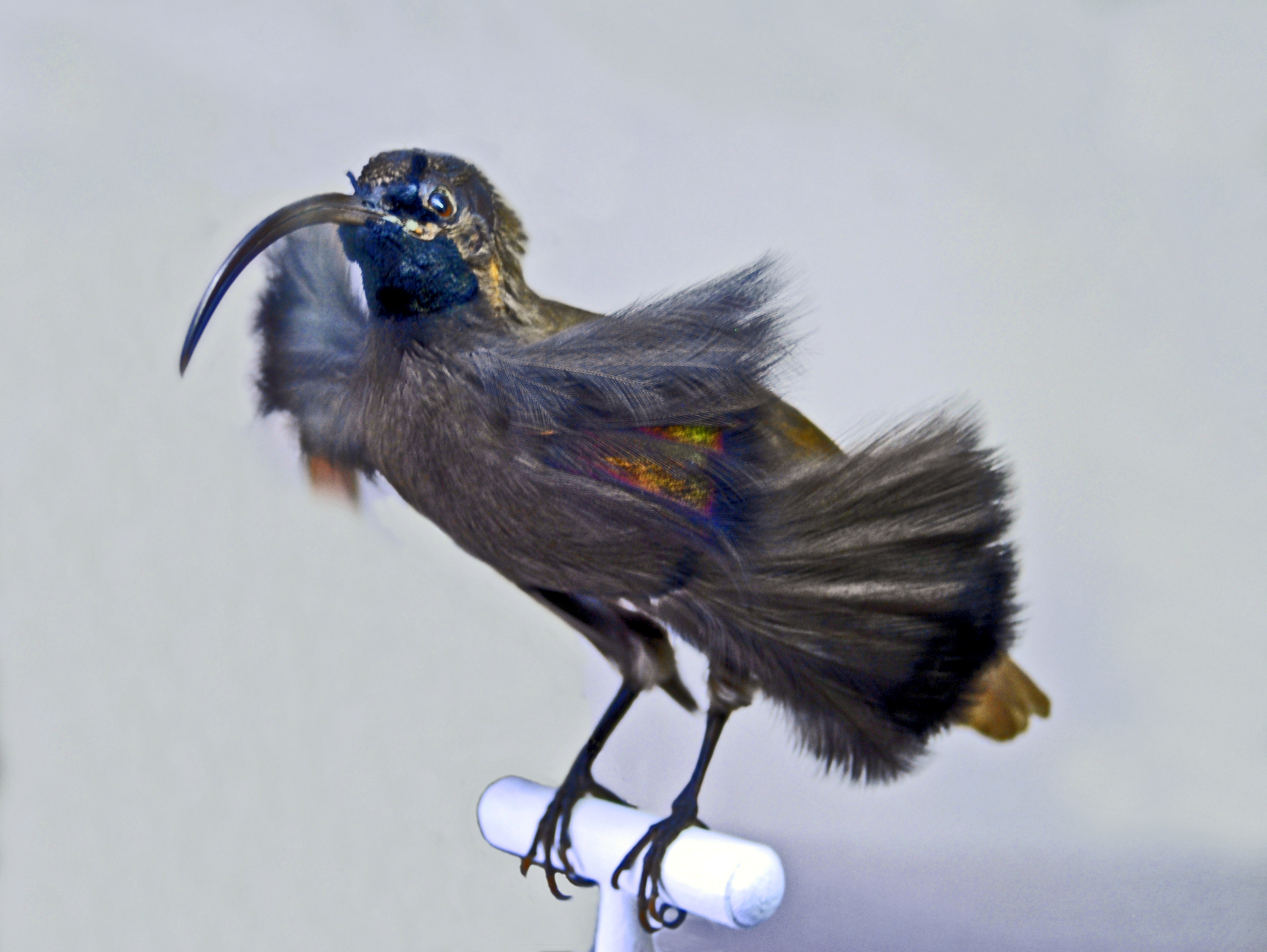Black-billed Sicklebill on:
[Wikipedia]
[Google]
[Amazon]
The black-billed sicklebill (''Drepanornis albertisi''), also known as the buff-tailed sicklebill (leading to easy confusion with the

File:Naturalis Biodiversity Center - RMNH.AVES.140696 1 - Drepanornis albertisi cervinicauda Sclater, 1883 - Paradisaeidae - bird skin specimen.jpeg, Race ''cervinicauda'' male specimen at the Naturalis Biodiversity Center.
File:Naturalis Biodiversity Center - RMNH.AVES.140692 1 - Drepanornis albertisi albertisi (Sclater, 1873) - Paradisaeidae - bird skin specimen.jpeg, Nominate female specimen.
File:Drepanornis albertisi - The Birds of New Guinea.jpg, Early preconception of ''Drepanornis albertisi''. Male front, female to the left.
File:Drepanornis cervinicauda - The Birds of New Guinea.jpg, Another early illustration of ''Drepanornis albertisi.''
File:Naturalis Biodiversity Center - RMNH.AVES.140697 2 - Drepanornis albertisi cervinicauda Sclater, 1883 - Paradisaeidae - bird skin specimen.jpeg, Race ''cervinicauda'' male specimen with upper pectoral feathers partially expanded.
BirdLife Species Factsheet
{{Taxonbar, from=Q1590657 black-billed sicklebill black-billed sicklebill black-billed sicklebill
hummingbird
Hummingbirds are birds native to the Americas and comprise the Family (biology), biological family Trochilidae. With approximately 366 species and 113 genus, genera, they occur from Alaska to Tierra del Fuego, but most species are found in Cen ...
of the same name), is a species of bird-of-paradise
The birds-of-paradise are members of the Family (biology), family Paradisaeidae of the order Passeriformes. The majority of species are found in eastern Indonesia, Papua New Guinea, and eastern Australia. The family has 45 species in 17 genera. T ...
. It, along with its congener, are the only members of the genus ''Drepanornis.''
Conservation status
Widespread throughout its large range, the black-billed sicklebill is evaluated as being ofleast concern
A least-concern species is a species that has been evaluated and categorized by the International Union for Conservation of Nature (IUCN) as not being a focus of wildlife conservation because the specific species is still plentiful in the wil ...
on the IUCN Red List of Threatened Species
The International Union for Conservation of Nature (IUCN) Red List of Threatened Species, also known as the IUCN Red List or Red Data Book, founded in 1964, is an inventory of the global conservation status and extinction risk of biological spe ...
. It is listed on Appendix II of CITES
CITES (shorter acronym for the Convention on International Trade in Endangered Species of Wild Fauna and Flora, also known as the Washington Convention) is a multilateral treaty to protect endangered plants and animals from the threats of inte ...
.
Etymology
The generic name ''Drepanornis'' consists of the words ''Drepane'' for "sickle" and ''ornis'' for "bird", so the genus name literally means "sickle bird", referring to their sickle-shaped bill; the specific name commemorates the Italian naturalist Luigi Maria d'Albertis, who discovered this species in 1872. The race ''cervinicauda'' subspecific name consists of ''cervinus'' for " stag-colored" and "''cauda"'' for tail, ''geisleri'' honors Bruno Geisler, a German ornithologist who described this subspecies, and ''inversus'' means "overturned".Subspecies and taxonomy
Though they share similar features and the same English name, the ''Drepanornis'' sicklebills are only distantly related to the '' Epimachus'' sicklebills. In fact, they are more closely allied with the twelve-wired andstandardwing
The standardwing bird-of-paradise (''Semioptera wallacii''), also known as Wallace's standardwing or as the standardwing, is a species of bird-of-paradise. It is the only member in Monotypic taxon, monotypic genus ''Semioptera''.
Etymology
Georg ...
birds-of-paradise. There are two agreeable subspecies, though races ''geisleri'' from the Huon Peninsula
Huon Peninsula is a large rugged peninsula on the island of New Guinea in Morobe Province, eastern Papua New Guinea. It is named after French explorer Jean-Michel Huon de Kermadec. The peninsula is dominated by the steep Saruwaged and Finist ...
and ''inversus'' from the Weyland Mountains and nearby highlands require more detail to be considered valid subspecies or not.
*''Drepanornis albertisi albertisi '' ( Sclater, 1873)
*''Drepanornis albertisi cervinicauda'' ( Sclater, 1884)
Description
The black-billed sicklebill is medium-sized, about 35 cm long, brown. The male has a bare maroon-grey skin around its eye, buff-colored tail, dark-brown iris, yellow mouth and blacksickle
A sickle, bagging hook, reaping-hook or grasshook is a single-handed agricultural tool designed with variously curved blades and typically used for harvesting or reaping grain crops, or cutting Succulent plant, succulent forage chiefly for feedi ...
-like bill. It is adorned with dark, horn-like forecrown feathers, an erectile fan-like bronze neck plumes and elongated purple-tipped flank plumes. The unadorned brown female is smaller, with bill longer than male and dark-barred below.
Biology
Its diet consists mainly of fruit andarthropods
Arthropods ( ) are invertebrates in the phylum Arthropoda. They possess an arthropod exoskeleton, exoskeleton with a cuticle made of chitin, often Mineralization (biology), mineralised with calcium carbonate, a body with differentiated (Metam ...
. The female lays one to two pale cream eggs with brown and grey spots.
Distribution
The black-billed sicklebill is found in mountainous areas with a scattered range of presence across western, central and eastern New Guinea. The species is mostly distributed in tropical montane forests at altitudes of 1100 to 1900 m above sea level. It overlaps with '' Drepanornis brujini'' only barely, but no hybridization has ever been recorded, though it is possible to occur.Gallery
References
External links
BirdLife Species Factsheet
{{Taxonbar, from=Q1590657 black-billed sicklebill black-billed sicklebill black-billed sicklebill